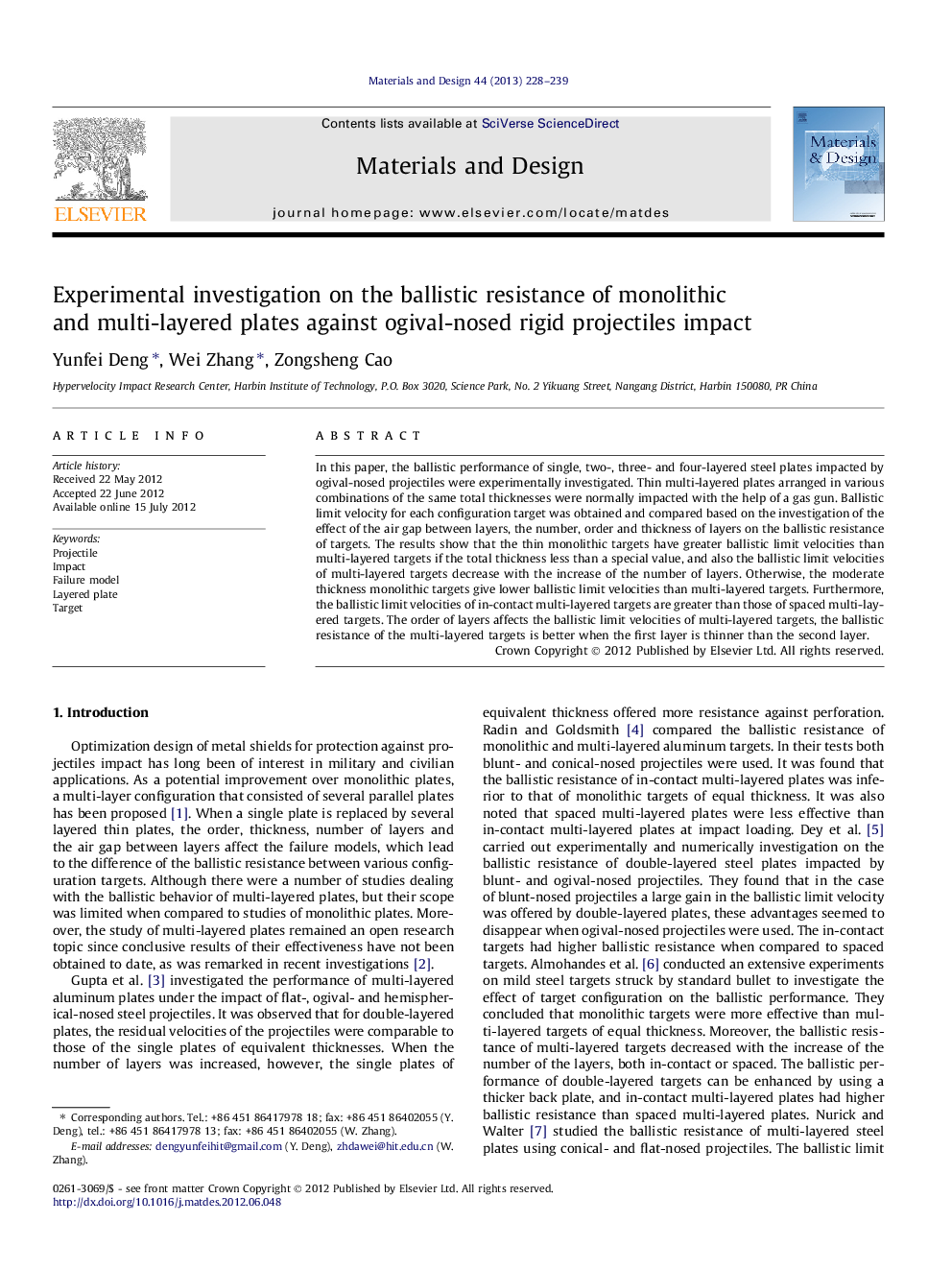| Article ID | Journal | Published Year | Pages | File Type |
|---|---|---|---|---|
| 830328 | Materials & Design (1980-2015) | 2013 | 12 Pages |
In this paper, the ballistic performance of single, two-, three- and four-layered steel plates impacted by ogival-nosed projectiles were experimentally investigated. Thin multi-layered plates arranged in various combinations of the same total thicknesses were normally impacted with the help of a gas gun. Ballistic limit velocity for each configuration target was obtained and compared based on the investigation of the effect of the air gap between layers, the number, order and thickness of layers on the ballistic resistance of targets. The results show that the thin monolithic targets have greater ballistic limit velocities than multi-layered targets if the total thickness less than a special value, and also the ballistic limit velocities of multi-layered targets decrease with the increase of the number of layers. Otherwise, the moderate thickness monolithic targets give lower ballistic limit velocities than multi-layered targets. Furthermore, the ballistic limit velocities of in-contact multi-layered targets are greater than those of spaced multi-layered targets. The order of layers affects the ballistic limit velocities of multi-layered targets, the ballistic resistance of the multi-layered targets is better when the first layer is thinner than the second layer.
► Air gap between layers diminishes the ballistic resistance of layered plates. ► The change in configuration leads to the transitions of failure models. ► The layering order affects the ballistic resistance of layered plates. ► The number of layers affects the ballistic resistance of layered plates. ► The different layering effect results from the transitions of failure models.
